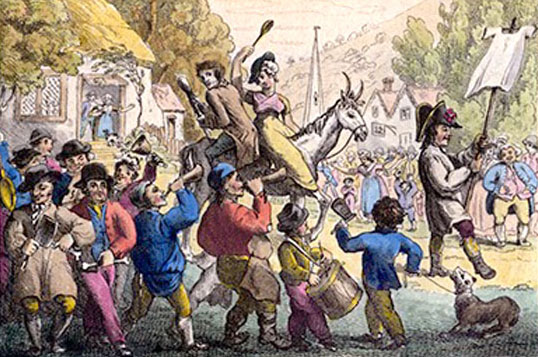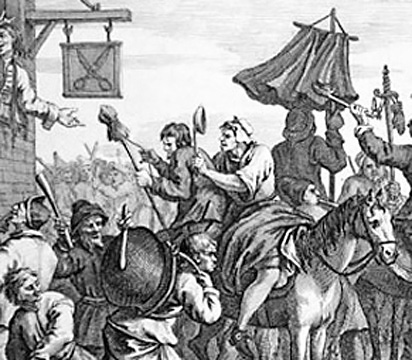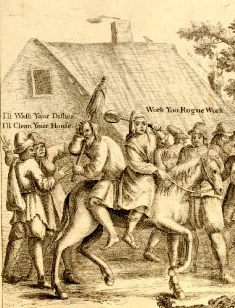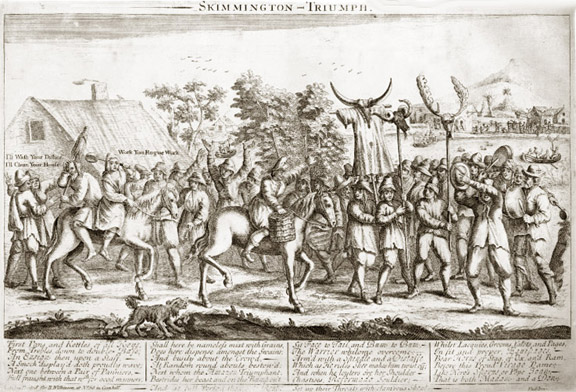The Emasculating Distaff
A street theater of public ridicule typically employed the distaff as an instrument of humiliation for men, by other men. Often they forced him to ride backwards on an ass, an old medieval punishment and shaming, holding a distaff. The woman is beating him with a ladle, while a procession of men make cacaphonous music. The parade s headed by a man carrying a woman's blouse.
Above, it seems to be a real woman who is shaming the man, but it was far more common for men in women's dress to enact parodies of what were known as "henpecking" wives. In fact, the leading pretext for such processions was that a man had failed to show "proper" rulership over his wife.
Here it is plainly a man dressed as a woman who is terrorizing the victim with the ladle and forcing him to spin. This scene is titled "Huldibras Encounters The Skimmington," which was a common name for these processions in England.
The French charivari also targeted non-dominant males, though men also enacted it against women who did not obey the code of female chastity or otherwise broke patriarchal norms. And the charivari was a common male satirical (and often destructive) custom on wedding nights, which sometimes devolved into gang rapes.
Below, a detail from "Skimmington Triumph," showing the "wife" with ladle ordering a man to "Work you rogue work," as a husband was expected to order around his wife. The husband, again facing backwards and holding a distaff, is saying "I'll wash your dishes, I'll clean your house."
The larger context shows a large crowd of men participating in a ritual humiliation of a husband they considered to not be upholding male dominant behavior. These processions enforced what men considered to be rightful male domination over women. The very concept of "emasculation" encodes this idea of male dominance as the natural order, and is used to quash any challenge to it.
This photo essay is a supplement to chapter 4 of Witches and Pagans: Women in European Folk Religion, by Max Dashu (Veleda Press). It discusses distaff symbolism in the ceremonial staffs of Norse seeresses, and the shaming of men who were perceived to engage in any activities marked as female, including the oracular ceremonies of seiðr.
Articles | Catalog | Home | Veleda Press



